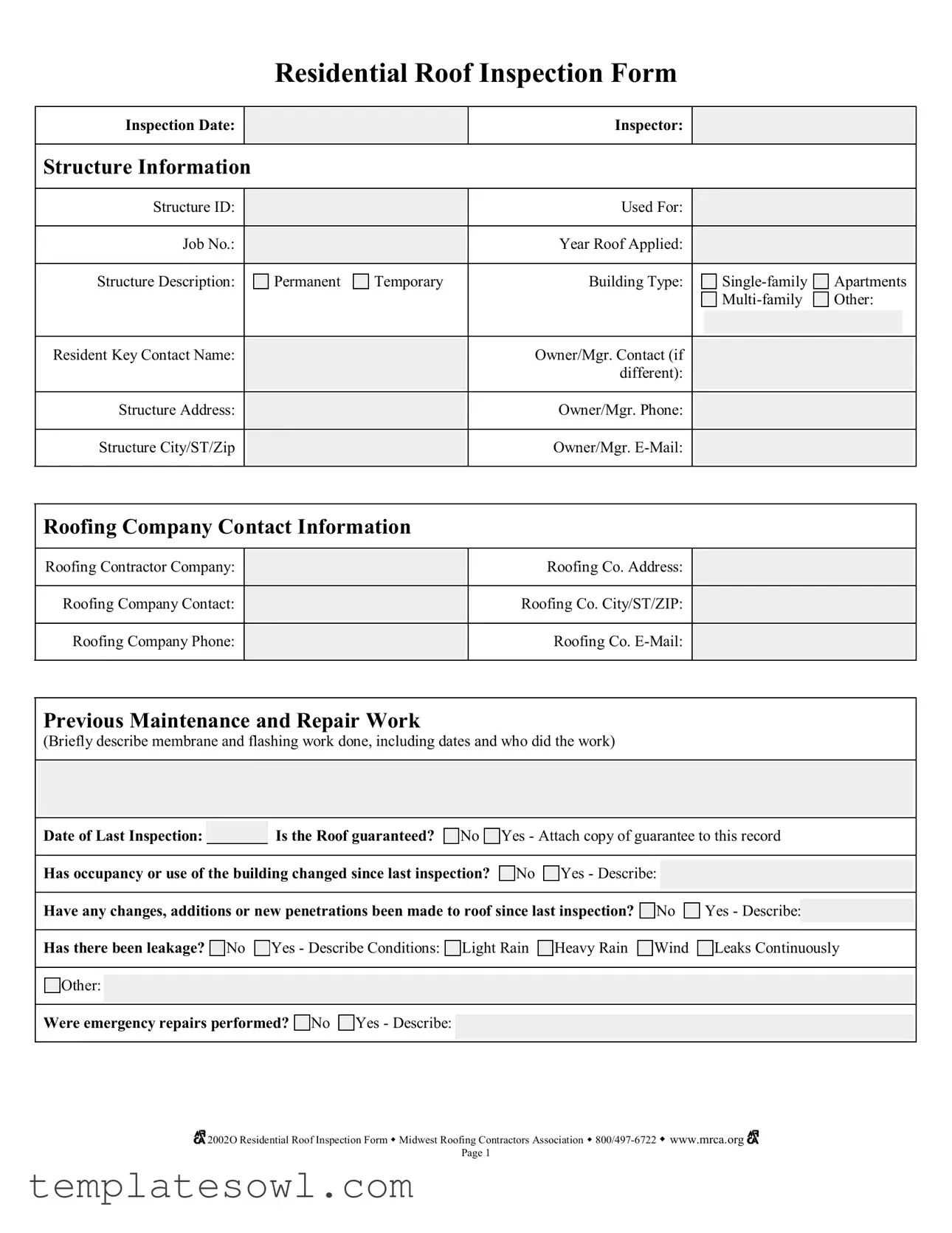What is the purpose of the Roof Inspection form?
The Roof Inspection form is designed to document the current condition of a residential roof. It aids in tracking maintenance, identifying issues, and recording any previous repairs or inspections. This comprehensive form helps ensure that every aspect of the roof is evaluated, which can lead to timely repairs and prolonged roof life.
Who should complete the Roof Inspection form?
Typically, a qualified roofing inspector or contractor will fill out the Roof Inspection form. However, property owners or managers can also initiate the form to keep a record of the roof's condition. It’s important that the person completing the form has the necessary knowledge and experience with roofing systems to accurately assess and document any issues.
What information is required on the form?
The Roof Inspection form requires a variety of information, including the inspection date, inspector’s name, and structure details. It also asks for contact information for the owner or manager, roofing contractor details, and any previous maintenance or repair work done. The form covers the condition of roof components, such as the roof deck, walls, and drains, among others.
How often should a roof inspection be conducted?
It is generally advisable to conduct a roof inspection at least once a year or after severe weather events. If the roof shows signs of wear or if the building has undergone changes—like new penetrations or occupancy changes—more frequent inspections may be necessary. This proactive approach can help catch issues early and save on costly repairs.
What should I do if the inspection reveals problems?
If the inspection uncovers issues, it’s essential to take action immediately, particularly if the condition is marked as "Poor" on the form. Depending on the severity, you may need to consult a roofing contractor for repairs. In the case of minor issues that require monitoring, it's advisable to schedule a follow-up inspection within a specified timeframe.
Can I attach additional documents to the Roof Inspection form?
Yes, the Roof Inspection form allows for attachments, such as copies of a roof guarantee or additional photographs of the roof condition. Providing supporting documentation can be very helpful for future reference, especially when discussing repairs with contractors or insurance companies.
What are the common conditions the form evaluates?
The Roof Inspection form evaluates several key conditions, including the roof deck's integrity, the condition of flashing, the status of drainage systems, and the overall performance of roofing materials. Each condition is coded as "Good," "Fair," or "Poor," allowing for a straightforward assessment of necessary actions.


 2002O Residential Roof Inspection Form w Midwest Roofing Contractors Association w
2002O Residential Roof Inspection Form w Midwest Roofing Contractors Association w 

 2002O Residential Roof Inspection Form w Midwest Roofing Contractors Association w
2002O Residential Roof Inspection Form w Midwest Roofing Contractors Association w 

 2002O Residential Roof Inspection Form w Midwest Roofing Contractors Association w
2002O Residential Roof Inspection Form w Midwest Roofing Contractors Association w 

 2002O Residential Roof Inspection Form w Midwest Roofing Contractors Association w
2002O Residential Roof Inspection Form w Midwest Roofing Contractors Association w 

 2002O Residential Roof Inspection Form w Midwest Roofing Contractors Association w
2002O Residential Roof Inspection Form w Midwest Roofing Contractors Association w 